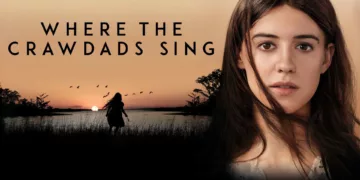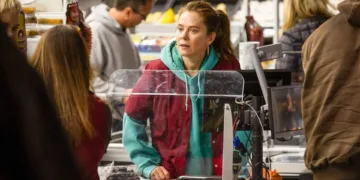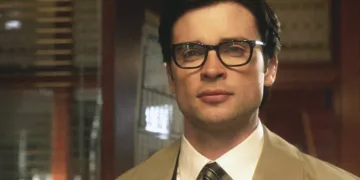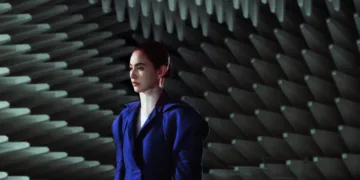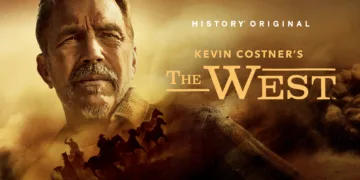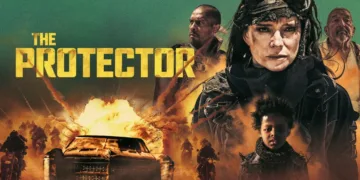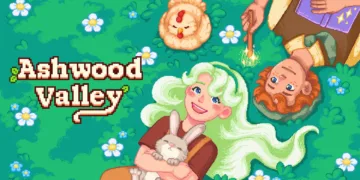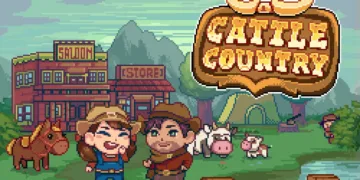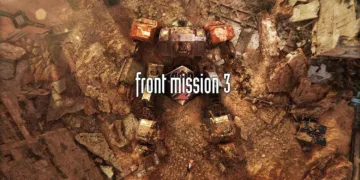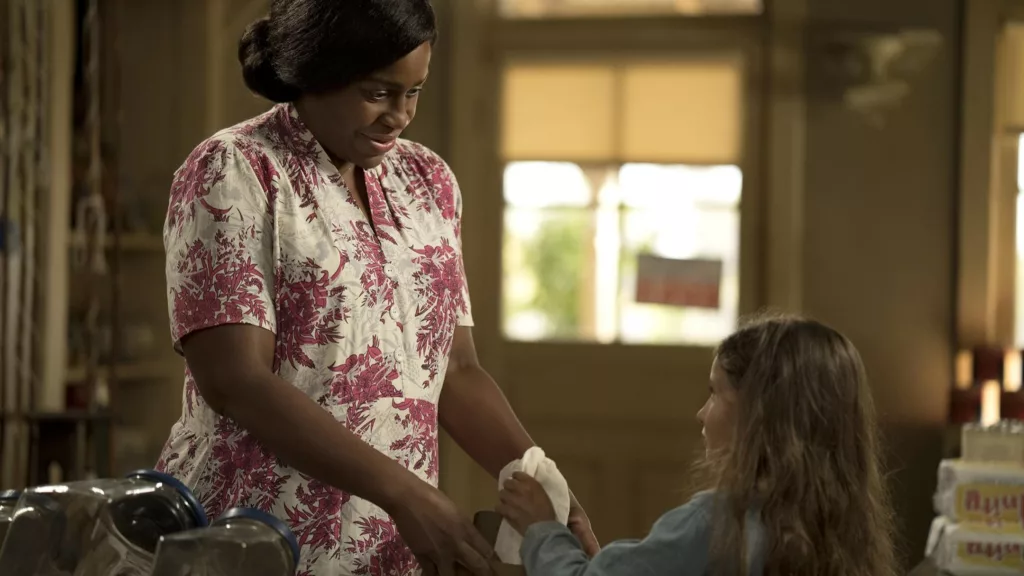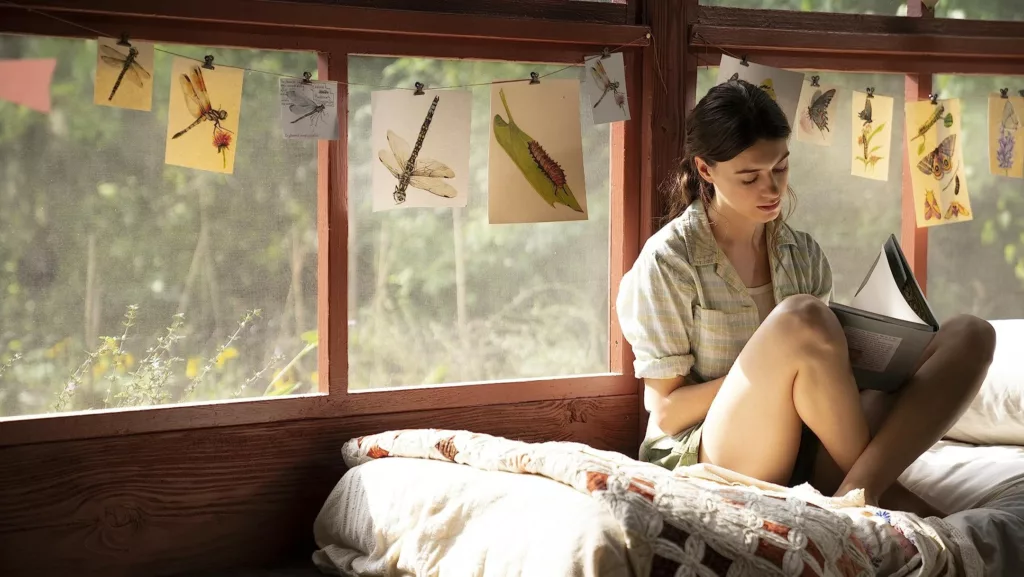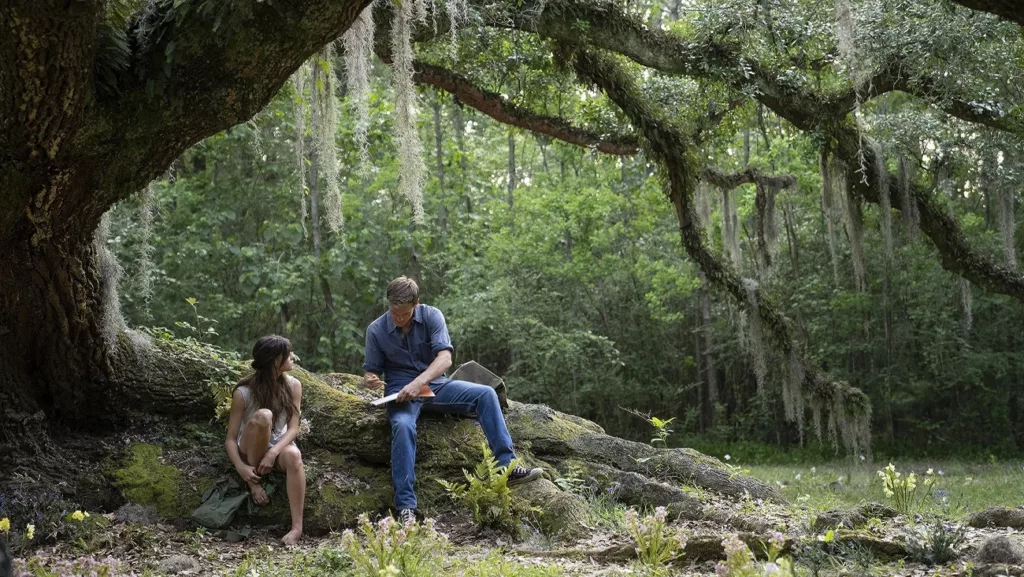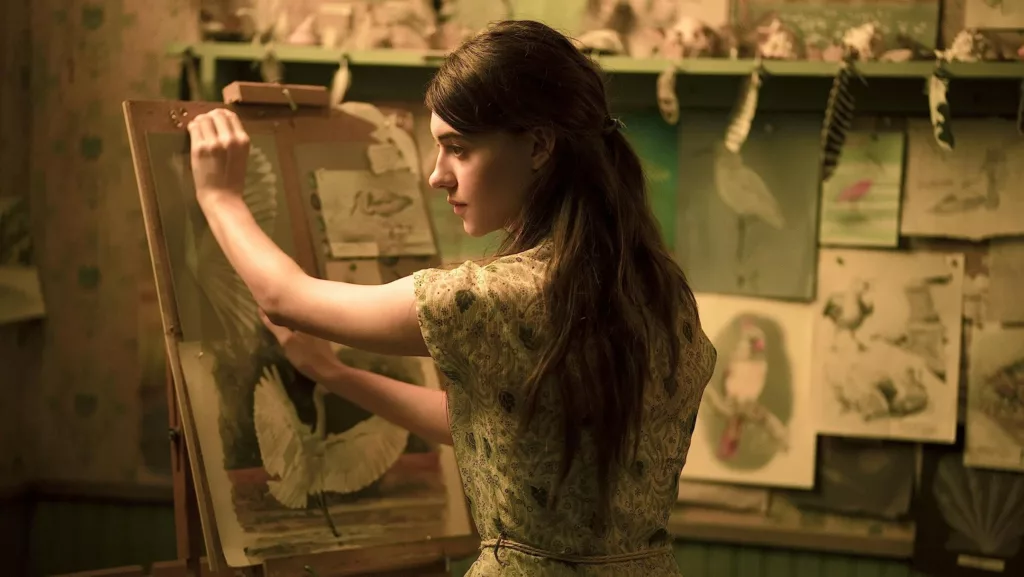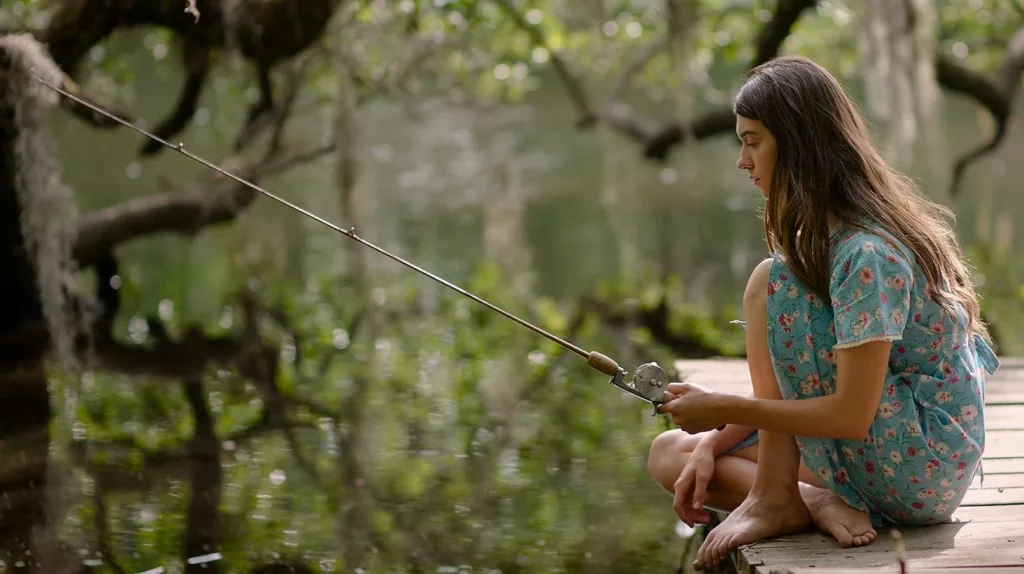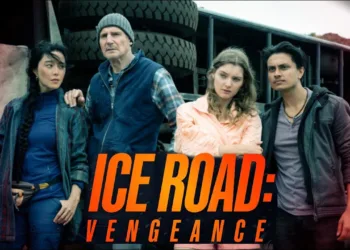This drama adaptation explores the story of Kya, a young woman living alone in the coastal marshlands of North Carolina in the 1950s and 60s. Having been abandoned by her entire family at a young age, Kya teaches herself to survive off the land and comes to know the natural world in an intensely personal way. Yet the local community shuns her as an outsider, dismissing her as the mysterious and solitary “Marsh Girl.”
When a local man is found dead, Kya immediately finds herself a suspect. What followed is part murder mystery, part courtroom drama as the small town circles their wagons around Kya. Through it all, the film remains dedicated to Kya’s perspective, revealing the depth of emotional pain and resilience within her.
Adapted from the immensely popular novel by Delia Owens, the film largely succeeds in bringing Kya’s story to the screen. Led by a standout performance from Daisy Edgar-Jones as Kya, viewers are drawn into her lonely yet defiant existence. For those curious about the best-selling book, this feature offers a visually striking glimpse into the life of an unconventional heroine carving out her place in a world not always willing to understand.
Marshland Murder Mystery
The humid summer air hangs heavy over the marshy outskirts of tiny Barkley Cove, nestled amongst the windswept grasslands and snarling cypress roots that snake through the waterlogged ground. For locals in the close-knit community, life moves at an unfurling pace, shaped by ancient rhythms of fishing and foraging. But a sense of unease is rippling through the town.
In a remote patch of marsh, two young boys have found a body – Chase Andrews, the charismatic high school quarterback and pride of Barkley Cove. With a funeral gathering clouds on the horizon, Sheriff Bill McCarthy must crack the case. His eye quickly falls on an outsider who’s long been a subject of rumors and stares – Kya Clark, the so called “Marsh Girl.”
Living alone in seclusion, Kya is as much a mystery to the folk of Barkley Cove as the murky depths that surround her crumbling shack. A succession of abandonments has left her adept at navigating the perilous waters of her isolated world, yet unsure of her place in society.
As the investigation tightens its net, this solitary young woman finds herself at the center of a drama that will upend the tiny town. With only the trailing grasses and watchful herons as witnesses, the question lingers – what happened amongst the reeds on that hot summer’s day?
Marsh Girl’s Resilience
Growing up alone in the isolated marsh, Kya had to learn self-reliance from a young age. After her mother left and siblings fled the abusive home, the young girl was trapped with her violent father. Though just a child, she endured his attacks and provided for herself when he too abandoned her. Living off the hostile land, Kya harvested mussels each dawn and traded her catch. She found shelter in a dilapidated shack near where great blue herons nested.
Daisy Edgar-Jones brings enormous empathy to the role of Kya. We feel the hardness that formed as this delicate girl hardened herself against relentless cruelty. Yet we also sense her lingering vulnerability and yearning for connection.
Alone in the vast, primordial marsh, Kya turned inward and outward to the natural world, gaining solace in her artistic gifts. Edgar-Jones makes us understand how this harsh environment nurtured Kya’s fierce spirit of survival.
Still, some questioned if the film fully captures Kya as the totally isolated outsider of the novel. Her appearance is carefully kept, seeming at odds with lives of utter hardship. Yet this discrepancy matters less thanks to Edgar-Jones’ nuanced work.
She makes us believe in Kya’s hidden depths and resilience, helping us overlook any flaws to instead admire this young woman’s indomitable will to endure. Overall, the film honours Kya’s character through its leading lady’s deeply felt and rewarding portrayal of Marsh Girl’s complex humanity.
The Whispers of Her Heart
Deep in the marshland lived a girl far removed from the world, yet still she learned life’s gentle lessons. Kya found solace in nature’s quiet beauty, drawing comfort from the creatures that shared her home. But even the deepest of waters can feel too vast and lonely, and her tender years soon brought new faces into view.
There was Tate, a boy who saw not a legend but a person, and sought to nurture the gifts he found within her. Patiently he tended the seeds of knowledge, helping Kya experience life’s richness through affection’s kind touch. In time she learned to read nature’s signs in books as well, yet more than letters did he offer – with him she knew comfort’s caress.
But all growth must continue on its own when lessons are learned, and so he too had to walk where the water stopped and dry land began. Kya was not surprised by his choice, though in her heart she kept the warmth he gifted there. And for a time it was enough to feel life’s pulse anew each day.
Yet the stillness of her world could not last. Enter Chase, who looked not within but only saw what met the eye. Where Tate ignited life’s passions with care, Chase’s fire sought to possess and consume. His interest was in pleasures of the flesh alone, with no care for the depths he might find. And those who live without seeing often project inward shadows outward instead.
In him Kya encountered life’s harsher ways, learning its pains as well as its joys. But even darkness holds lessons if we have eyes to see, and through it all her inner light could not be dimmed. Now in her hour of trial that strength will be tested, but the whispers of her heart will guide where the light is found within.
Life in the Marsh
The rolling marshlands conceal many secrets. As Kya navigates her solitary life among the wildlife and whispering grasses, we glimpse the inner strength and curiosity that empower her. Yet unknown dangers lurk beyond the forest’s edge.
When a death upends the close-knit community, suspicion instantly falls upon Kya due to her outsider status. As rumors spread like wildfire, the courtroom becomes the battleground where her freedom hangs in the balance. Here, Kya’s fate would be decided with mere words rather than tangible clues.
However, the film fails to build much mystery or tension within these walls. We learn too early who meets their demise, leaving little for lawyers to unravel. The lack of a thrilling back-and-forth means our hope is quickly dashed. Real intrigue demands layering clues and viewpoints, cultivating a shared desire among all to finally expose the full truth.
A defter hand may have slowly peeled back the rumors to reveal uncomfortable realities below, keeping us guessing alongside the jury. By withholding just a bit more at first, we could have felt the stakes rise alongside Kya instead of watching from a removed vantage. The rich setting afforded many opportunities to seed clues throughout her story in an organic fashion.
While Kya’s bravery under fire was plain to see, she deserved allies who brought the mystery to its boiling point within that courtroom. A taut battle may have brought her spirit and resilience into even clearer focus for us all.
Marshland Magic
Sprawling moss-draped cypress and slow-moving waters create a arresting backdrop for Where the Crawdads Sing. Beautiful cinematography by Polly Morgan captures the lush isolation of the North Carolina marsh. Mist rises like ghosts from the still surfaces each morning, shrouding Kya’s ramshackle hut in a veil of mystery.
As the sun ascends, a new world awakens. Gators lurk half-seen among the lily pads while egrets dance their heron-legged ballet. Beyond the shore, islands drift like rafts on an undulating sea of marsh grass. Despite hardscrabble lives, nature’s bounty is never far. Blue crabs scuttle and mullet leap among tangled red roots that cradle the land.
Morgan’s camera sweeps across these vistas with an artist’s eye, finding poetry in each small detail. Yet for all the scenery’s rugged romance, some felt the setting too polished. A swamp knows grit and grime, yet nary a mud-caked boot mars this visual dream. Some yearned to see nature in all her indomitable, indifferent glory rather than so neat and picturesque.
Alas, the director’s hand remains somewhat light. While photography is a delight, direction feels workmanlike. Scenes drift by on charm alone rather than crafted tension. A story so rooted in place might have embraced the space more wholly, losing viewers just as Kya loses herself in long afternoons adrift on swirling currents and sights unseen. With bolder visual storytelling, this marshland might have sang its mysteries more hauntingly still.
Reading Between the Reed Lines
Delia Owens’ sweeping marshland novel transported readers to a world unlike any other. Translating its essence to film proved challenging yet Olivia Newman’s direction captured much that made the story special.
Edgar-Jones embodied Kya with quiet grace, her curious nature and resilience shining through. Living off the land alone from a young age would break many, yet Kya found strength where others saw only isolation. Edgar-Jones vulnerability and inner steel brought the “Marsh Girl” to life in a way many may have deemed impossible.
Taylor John Smith and Harris Dickinson also left impressions as the two men who shaped Kya’s life. Tate’s kindness filled a void while Chase exploited pain still fresh. Both performances captured the blurred lines between attraction and indifference these young men so easily crossed.
Yet on the page, Owens drew lines the screen could not. In Kya’s world, the reeds held secrets and the swamp revealed truths to those listening without agenda. Details of her drawings, each feather’s unique markings, brought depth to Kya’s passion perhaps lost on some. Nuances too subtle for cameras were instead answered through Kya’s narration, offering a richness about both character and setting that enriched understanding.
A film, bound to time in a way a book is not, understandably focused its efforts elsewhere. But for those with imagination to find what lines remain uncrossed and unexplained, Owens’ novel may continue to provide a refuge and role model worth returning to between screenings. Both works leave impressions through different means; together offering a fuller experience for those willing to read between the lines.
Crawling in the Swamps
The marshes still call to those seeking solace in nature’s quiet beauty. But for this adaptation of Where the Crawdads Sing, too many missteps muffled an intriguing story’s cinematic voice.
Daisy Edgar-Jones shone as Kya, her vulnerability and grit hinting at complex depths the film struggled to fully explore. Living off the land yet yearning for human connection, Kya’s resilience against harsh odds seemed tailor-made for an empowering tale. Sadly, the constant narration and flashbacks diluted mystery and tension.
Minor characters like Tate and especially the store owners Mabel and Jumpin felt thinner than expected. Context lacked around the trials of growing up Black in the segregated South, sidelining important social themes. And the rushed, twist ending disrupted carefully built intrigue.
Yet swampland scenes exuded a melancholy allure, haunting sunlight dancing on still waters. Perhaps someday, with bolder vision, Hollywood will find the strength and nuance to do full justice to Kya’s story. For now, its cinematic cry sadly gets lost in translation, disappointing fans who’d hoped to wander deeper into uncertain territory alongside this memorable Marsh Girl. The film’s beauty remains, yet its heartbeat stayed too far drowned in the bog.
The Review
Where the Crawdads Sing
While rich atmospheric elements and a standout lead performance offered glimmers of promise, Where the Crawdads Sing ultimately gets mired down in a muddle of missed opportunities. By failing to fully realize either its mystery or social commentary elements, the film spreads itself too thin to draw viewers deep into its dramatic marshes.
PROS
- Atmospheric cinematography that transports viewers to the brooding marshland setting
- Strong lead performance from Daisy Edgar-Jones as the resilient yet vulnerable Kya
- Intriguing mystery elements around the death at the story's center
CONS
- Narration and flashbacks disrupt narrative tension and momentum
- Characterizations feel thinly drawn, especially for supporting roles
- Rushed resolution compromises carefully setup mystery
- Fails to fully realize either mystery or social commentary themes
